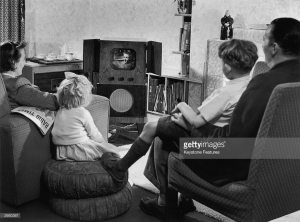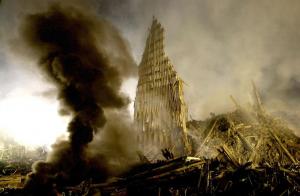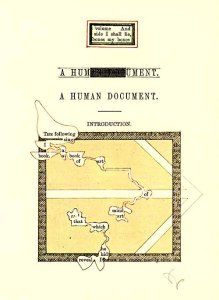 In an epoch of global economic interdependency, there has been a concomitant globalization of culture. On the one hand, the homogenization of culture through the dispersal of consumer goods and the saturation of mass media destroys the indigenous and authentic artifact. Native languages and religious practices, ethnic foods, handicraft arts and clothing, traditional music and entertainment face slow extinction. On the other hand, the transnational culture that arises may provide positive attributes through crosspollination or eclecticism that more readily acquaints one culture with the unique differences of another, sometimes leading to creative appropriation, pluralism, tolerance, and exposure to alternative systems of belief.
In an epoch of global economic interdependency, there has been a concomitant globalization of culture. On the one hand, the homogenization of culture through the dispersal of consumer goods and the saturation of mass media destroys the indigenous and authentic artifact. Native languages and religious practices, ethnic foods, handicraft arts and clothing, traditional music and entertainment face slow extinction. On the other hand, the transnational culture that arises may provide positive attributes through crosspollination or eclecticism that more readily acquaints one culture with the unique differences of another, sometimes leading to creative appropriation, pluralism, tolerance, and exposure to alternative systems of belief.
Cosmopolitanism has its origin in the assertion by Diogenes Laërtius, “I am a citizen of the world,” that he is kosmou politês, meaning that he did not identify with his local origin or caste but rather defined himself in terms of universalism and compassion for the other. But such a cosmopolitanism defined as katholikos (catholic, “universal”) has not been sufficiently extended in modernity to non-Western cultures. Gilles Deleuze and Félix Guattari have proposed a transversalism that resists both the hegemony and homogeneity of late-capitalist globalization by highlighting incommensurable cultural differences and exposure to alternative idioms. Transversal cosmopolitans not only agree to shared values with others but submit to a “shared deterritorialization” in which they are as much operated upon by transversalism, altered in their conception of origin, participant in a line of becoming, mobile in state and cultural identity, as they are operating in a transversal exchange with the other. Transversals are oblique, “double captures” with the potential for change that affects both elements in a correspondence. The global novel is one such expression of transversal politics, not in an effort to arrive dialectically at mutual reassurances but as narratives that expose and foreground the différend which resists translation into a single global idiom.
Global novels transcend the traditional borders of national literatures, native languages, colonialism, racial and ethnic divides, and religion. These fictions both represent and critique the technological consumerism, transnational politics, and cultural conflicts of migration that have come to dominate globalism. Its authors—and sometimes their texts—are bi- or multilingual, even as the world Anglophone novel trades in an English language that has become the lingua franca of an increasingly cosmopolitan citizenry. We will ask whether the global novel can be “ours” in the same manner as a national literature or in the form of shared humanitarian values—like the “white helmet” volunteers of the Syrian crisis—of liberality, human rights, and a progressive, social democracy, or whether such novels are merely another item on the checkout receipt of the marketplace of popular ideas and entertainment.
Works for extended discussion may include: Chimamanda Ngozi Adichie, Americanah (2013); Roberto Bolaño, The Savage Detectives (2007); Kiran Desai, The Inheritance of Loss (2006); Dave Eggers, A Hologram for the King (2013) or What Is the What: The Autobiography of Valentino Achak Deng (2006); Elena Ferrante, My Brilliant Friend (2012); Ha Jin, Nanjing Requiem (2012); Mohsin Hamid, How to Get Filthy Rich in Rising Asia (2013) or Exit West (2017); Adam Kirsch, Writing the World in the 21st Century (2016); Colum McCann, TransAtlantic (2014); Christian Moraru, Cosmodernism: American Narrative, Late Globalization, and the New Cultural Imaginary (2011); Haruki Murakami, Kafka on the Shore (2006); Azar Nafisi, Reading Lolita in Tehran (2003); Martha C. Nussbaum, For Love of Country? (2002); Orhan Pamuk, Istanbul: Memories and the City (2003); W. G. Sebald, The Emigrants (1992); Mariano Siskind, Cosmopolitan Desires: Global Modernity and World Literature in Latin America (2014); Zadie Smith, White Teeth (2000) or NW (2013). Other literary and critical readings will be available through UB Learns or on graduate course reserve.
Course requirements will include a twenty-minute seminar presentation by all enrolled students and a twenty-page research paper from those students registered intensively.

 This online installment of Film Genres will examine film adaptations of the contemporary novel. Literary fiction provides a rich, original source for story, character and setting in feature films. And yet the director, screenwriter, and actors are inevitably faced with challenges in successfully transferring a predominantly textual art into a visual and auditory medium. Especially with well-known classic works such as F. Scott Fitzgerald’s The Great Gatsby (1925), recently adapted by director Baz Luhrmann, the problem of fidelity to the original novel arises. The editing of long prose fictions to fit within the typical two-hour duration of feature films gives the most gifted screenwriter migraines. Sometimes, however, a script may be augmented with scenes or characters not present in the original for a coherent representation of the story on screen. Literature that heavily relies on interior monologue and narration rather than external dramatic action or dialogue poses a nearly insurmountable hurdle for adaptation. We should also consider that novels are most often sole-authored works of the imagination that, in the words of Irish writer and humorist Flann O’Brien, are “self-administered in private,” while films are very much collective enterprises demanding the skills of hundreds of people and, ideally, screened in public theaters to large appreciative audiences.
This online installment of Film Genres will examine film adaptations of the contemporary novel. Literary fiction provides a rich, original source for story, character and setting in feature films. And yet the director, screenwriter, and actors are inevitably faced with challenges in successfully transferring a predominantly textual art into a visual and auditory medium. Especially with well-known classic works such as F. Scott Fitzgerald’s The Great Gatsby (1925), recently adapted by director Baz Luhrmann, the problem of fidelity to the original novel arises. The editing of long prose fictions to fit within the typical two-hour duration of feature films gives the most gifted screenwriter migraines. Sometimes, however, a script may be augmented with scenes or characters not present in the original for a coherent representation of the story on screen. Literature that heavily relies on interior monologue and narration rather than external dramatic action or dialogue poses a nearly insurmountable hurdle for adaptation. We should also consider that novels are most often sole-authored works of the imagination that, in the words of Irish writer and humorist Flann O’Brien, are “self-administered in private,” while films are very much collective enterprises demanding the skills of hundreds of people and, ideally, screened in public theaters to large appreciative audiences.















